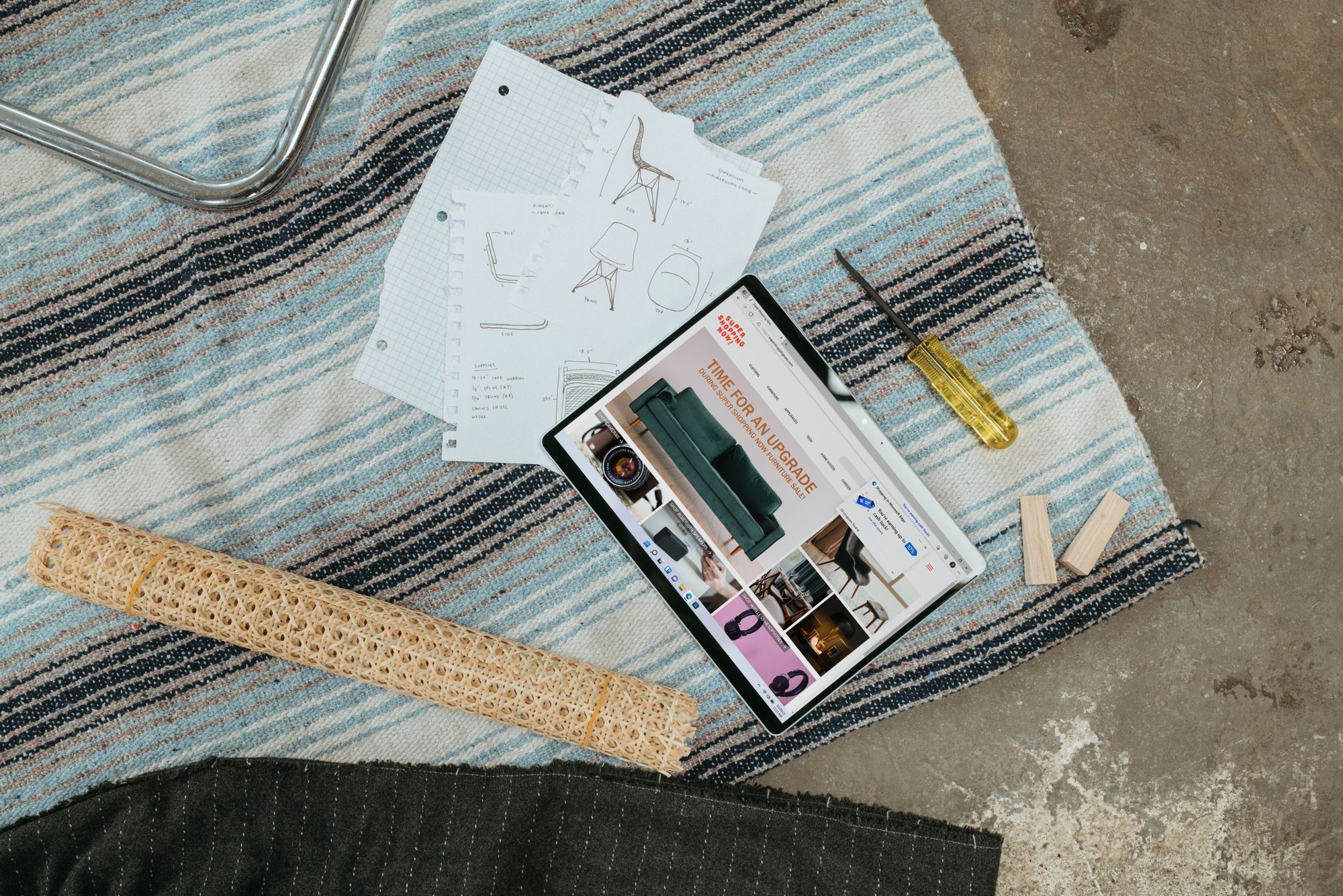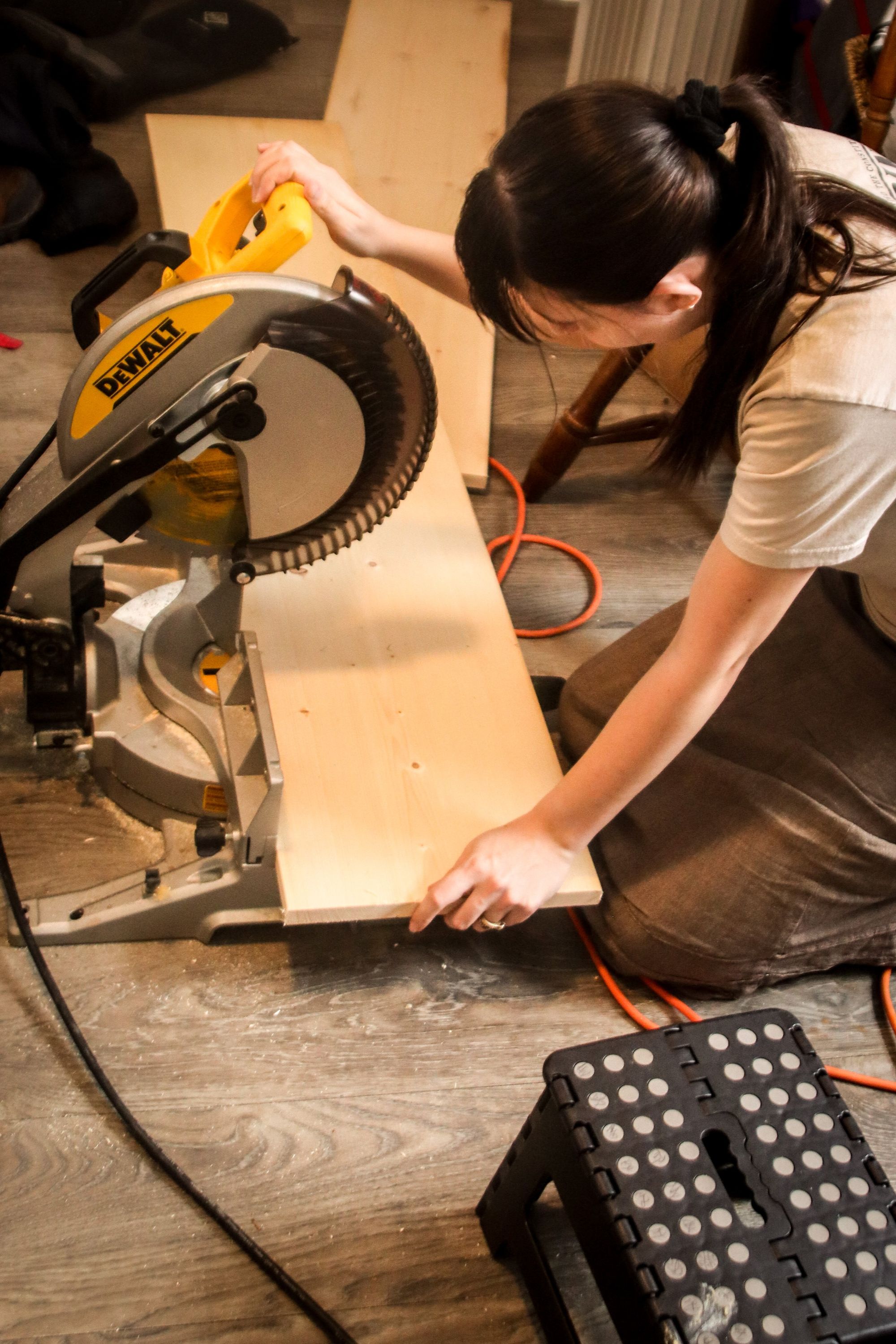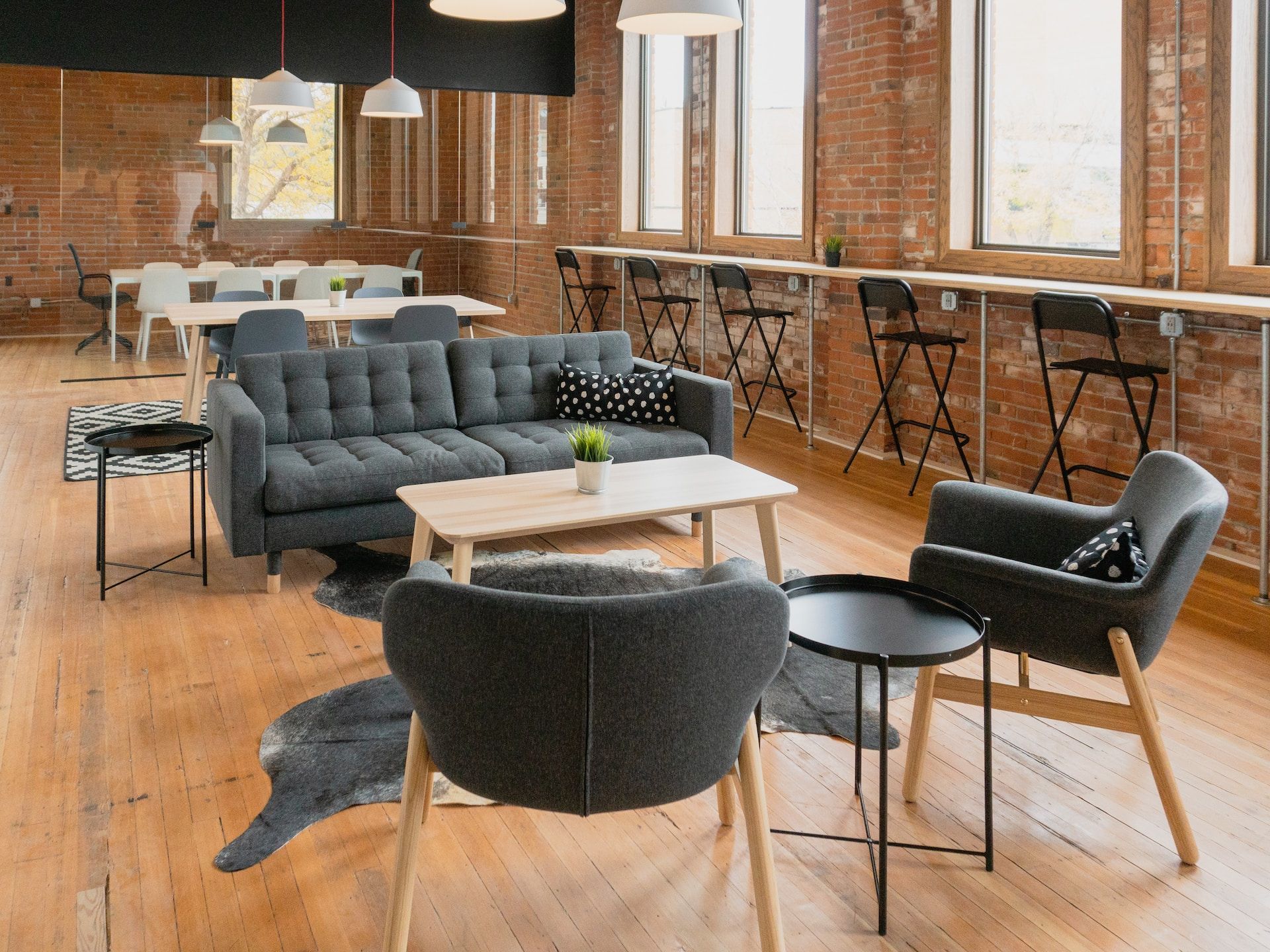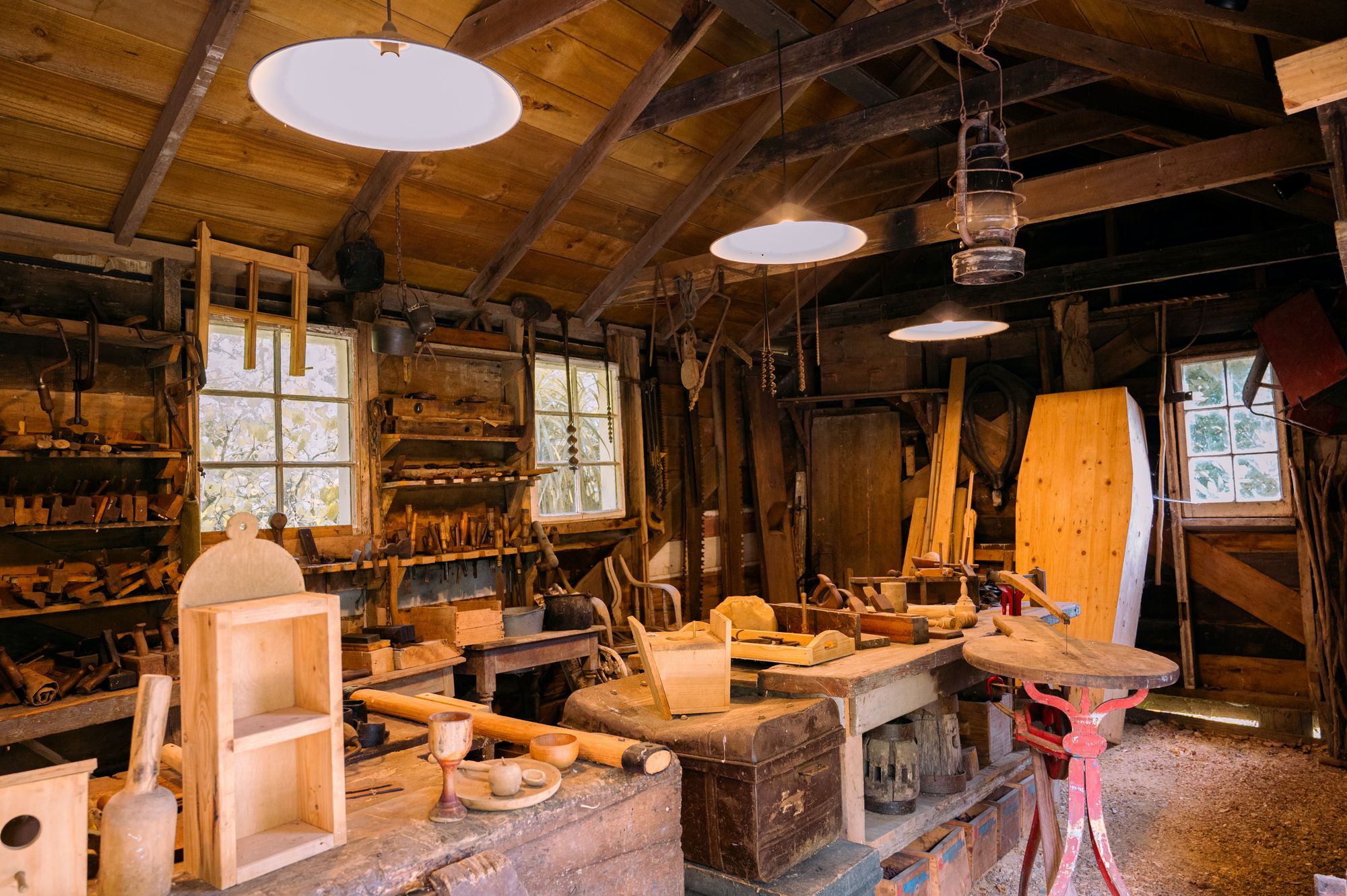In furniture manufacturing, designing for manufacturability is one of the most important aspects of product design. Furniture can be extremely expensive to produce if it is not put together well or if it requires too many steps to manufacture.
Moreover, designing for furniture manufacturing requires careful planning and attention to detail in order to create products that are both functional and aesthetically pleasing.
In this article, we will highlight some of the essential considerations when designing for furniture manufacturing and discuss how they can help you save time and money while manufacturing your products. Let's take a look at the table of content before we dive in:
- Meaning of Designing for Furniture Manufacturing
- Importance of Designing for Furniture Manufacturing
- Different Types of Furniture Manufacturing Processes
- Materials Commonly Used in Furniture Manufacturing and their Properties
- Different Tools and Machines Used in Furniture Manufacturing and their Functions
- Designing for Furniture Manufacturing
- Materials and Finishes
- Prototyping and Testing
- Sustainability and Ethical Considerations
- Wrapping Up
- How Deskera Can Assist You?
Meaning of Designing for Furniture Manufacturing
Designing for furniture manufacturing refers to the process of creating furniture designs that take into consideration the manufacturing process and the limitations and constraints that come with it. This includes factors such as cost, time, available materials, tools, and manufacturing techniques.

The goal is to create designs that are not only aesthetically pleasing and functional, but also feasible to produce at scale and within a reasonable budget.
Designing for furniture manufacturing involves balancing design creativity with practicality and manufacturing efficiency. This approach ensures that the end product meets both design and manufacturing requirements, resulting in a high-quality product that can be produced efficiently and cost-effectively.
Importance of Designing for Furniture Manufacturing
Designing for furniture manufacturing is important for several reasons:
Cost-effectiveness: By considering the manufacturing process during the design phase, designers can identify ways to reduce material waste, optimize production processes, and minimize the need for expensive machinery or specialized labor. This can result in cost savings for the manufacturer, which can be passed on to the consumer.
Efficiency: When designs are optimized for the manufacturing process, the manufacturing process becomes more efficient. This means that the manufacturer can produce more furniture in less time, without sacrificing quality. This can increase the manufacturer's productivity and profitability, as well as provide consumers with quicker delivery times.
Quality: Designs that are optimized for the manufacturing process can result in higher-quality products. When designs are created with the manufacturing process in mind, manufacturers can ensure that the furniture is structurally sound, durable, and meets industry standards.
Aesthetics: Designing for furniture manufacturing does not mean sacrificing aesthetics. By considering the manufacturing process, designers can identify ways to create visually appealing designs that are also practical to manufacture. This can result in furniture that is both beautiful and functional.
Sustainability: By considering the manufacturing process and materials used in production, designers can create sustainable designs that reduce waste and minimize the environmental impact of manufacturing. This can help reduce the carbon footprint of furniture production and promote a more sustainable industry.
In summary, designing for furniture manufacturing is important for creating cost-effective, efficient, high-quality, aesthetically pleasing, and sustainable furniture designs that meet both the needs of the manufacturer and the consumer.
Different Types of Furniture Manufacturing Processes
There are several different types of furniture manufacturing processes, including:
Mass production: Mass production involves producing large quantities of identical furniture pieces using assembly line techniques. Furthermore, this process is highly automated and typically involves the use of standardized components and materials to increase efficiency and reduce costs.
Custom production: Custom production involves creating furniture pieces according to the customer's specifications. This process requires more time and resources than mass production, as each piece is unique and must be manufactured from scratch.
Semi-custom production: Semi-custom production is a hybrid between mass production and custom production. This process involves producing furniture pieces with some customizable features, such as color or upholstery options. This allows for some personalization while still maintaining some level of efficiency and cost-effectiveness.
Artisanal production: Artisanal production involves creating furniture pieces by hand, often using traditional techniques and tools. This process requires a high level of skill and attention to detail, and is typically more expensive than mass production or custom production.
Modular production: Modular production involves creating furniture pieces with interchangeable components that can be assembled in different configurations. This process allows for greater flexibility in design and customization, while still maintaining some level of efficiency and cost-effectiveness.
In summary, the different types of furniture manufacturing processes vary in terms of efficiency, cost-effectiveness, customization, and level of automation. Furniture designers and manufacturers may choose a particular manufacturing process based on their specific needs and goals.
Materials Commonly Used in Furniture Manufacturing and their Properties
There are several materials commonly used in furniture manufacturing, each with its own unique properties. Some of the most common materials used in furniture manufacturing include:
Wood: Wood is a popular choice for furniture because of its natural beauty and durability. There are many different types of wood used in furniture manufacturing, each with its own unique properties. For example, oak is a strong and durable hardwood, while pine is a softer and more lightweight option.
Plywood: Plywood is a type of engineered wood made by gluing together several thin layers of wood veneer. Plywood is strong, durable, and resistant to warping and cracking, making it a popular choice for furniture manufacturing.
MDF: Medium-density fiberboard (MDF) is another type of engineered wood made by combining wood fibers with resin and pressing them into sheets. MDF is strong, dense, and uniform in texture, making it a popular choice for furniture parts that require a smooth surface.
Metal: Metal is a strong and durable material that is commonly used for furniture frames, legs, and hardware. Steel and aluminum are popular choices for furniture manufacturing because of their strength, durability, and resistance to rust and corrosion
Glass: Glass is a versatile material that can be used in furniture manufacturing for tabletops, shelves, and decorative elements. Glass is durable and easy to clean, but can be prone to scratches and chips.
Upholstery fabrics: Upholstery fabrics are used to cover furniture frames and provide a comfortable and aesthetically pleasing surface. Common types of upholstery fabrics include cotton, linen, polyester, and leather.
In summary, the materials commonly used in furniture manufacturing vary in terms of strength, durability, texture, and aesthetic qualities. Furniture designers and manufacturers may choose a particular material based on their specific needs and goals, taking into consideration factors such as cost, availability, and the desired look and feel of the finished product.
Different Tools and Machines Used in Furniture Manufacturing and their Functions
Furniture manufacturing involves the use of a variety of tools and machines to shape, cut, join, and finish materials. Some of the most common tools and machines used in furniture manufacturing include:
Table saw: A table saw is a powerful saw that is used to make long, straight cuts in wood and other materials. It consists of a circular saw blade mounted on an arbor that is driven by an electric motor.
Band saw: A band saw is a type of saw that uses a continuous band of toothed metal to make curved cuts in wood and other materials. It is commonly used for cutting curves and irregular shapes.
Drill press: A drill press is a machine that is used to drill precise holes in wood and other materials. It consists of a drill bit that is mounted on a spindle and driven by an electric motor.
Jointer: A jointer is a machine that is used to flatten and smooth the surface of rough lumber. It consists of a rotating cutterhead that removes a thin layer of wood from the surface of the lumber as it passes over the machine.
Planer: A planer is a machine that is used to make lumber of a uniform thickness. It consists of a rotating cutterhead that removes material from the surface of the lumber as it passes over the machine.
Router: A router is a handheld power tool that is used to cut decorative profiles and shapes into wood and other materials. It consists of a spinning bit that is driven by an electric motor
Sanding machine: A sanding machine is used to sand the surface of wood and other materials to smooth them out and prepare them for finishing. It consists of a motor that drives a sanding belt or disc.
CNC machine: A CNC (Computer Numerical Control) machine is a computer-controlled machine that is used to cut and shape materials with precision. It can be used for a wide range of operations, from cutting and shaping to drilling and carving.
Ultimately, the tools and machines used in furniture manufacturing vary in terms of their function and complexity. Furniture designers and manufacturers may choose a particular tool or machine based on their specific needs and goals, taking into consideration factors such as efficiency, precision, and the desired finished product.
Designing for Furniture Manufacturing
Designing for furniture manufacturing is the process of creating furniture designs that can be produced efficiently and effectively in a manufacturing environment.
Furniture designers need to consider factors such as material selection, production techniques, and assembly methods when creating designs that can be manufactured at scale while meeting quality standards.
By designing for manufacturing, furniture designers can ensure that their creations are not only aesthetically pleasing, but also functional, durable, and cost-effective to produce.
Furthermore, this approach helps to streamline the manufacturing process, reduce waste and cost, and ultimately, create furniture products that meet the needs of consumers and the furniture industry.
Importance of Considering Manufacturing Constraints
Considering manufacturing constraints is essential when designing furniture because it can have a significant impact on the quality, cost, and efficiency of production. Manufacturing constraints are limitations or requirements that need to be taken into account during the design process to ensure that the product can be produced successfully in a manufacturing environment.
Some common manufacturing constraints that need to be considered during furniture design include:
Materials selection: The choice of materials can have a significant impact on the manufacturing process. The designer needs to consider factors such as the availability, cost, strength, and durability of the materials and select those that are suitable for the manufacturing process.
Production techniques: The designer needs to choose production techniques that are appropriate for the selected materials and the desired outcome. For example, some materials may require specific cutting or joining techniques to achieve the desired shape or function.
Assembly methods: The designer needs to consider how the furniture pieces will be assembled and the tools and equipment required for the assembly process. The assembly process needs to be designed to be efficient and cost-effective while ensuring that the final product is sturdy and durable.
By considering manufacturing constraints during the design process, designers can identify and address potential issues before the manufacturing process begins.
This can help to reduce manufacturing costs, minimize production waste, and ensure that the final product meets the desired quality standards. Additionally, designing for manufacturing can help to streamline the production process, allowing for greater efficiency and faster time-to-market.
Ultimately, considering manufacturing constraints is critical to producing furniture products that are not only aesthetically pleasing but also functional, durable, and cost-effective to produce.
Key Design Principles for Furniture Manufacturing
There are several key design principles that are important to consider when designing furniture for manufacturing. These design principles include:
Simplicity: Simple designs are often more efficient and cost-effective to manufacture. Simplifying the design can also reduce the number of materials needed and streamline the manufacturing process, which can reduce waste and costs.
Example:
A simple design for a dining chair could be a basic four-legged chair with a wooden seat and backrest. By eliminating ornate details, this design can be produced more efficiently and cost-effectively.
Modularity: Modular designs allow for flexibility in manufacturing and assembly, making it easier to produce different configurations of the same furniture product. This approach can also make it easier to repair and replace parts of the furniture as needed.
Example:
A modular design for a sectional sofa could allow for interchangeable components, such as arms, cushions, and backs. This allows the manufacturer to produce multiple configurations of the same sofa using the same components, reducing costs and minimizing waste.
Scalability: Furniture designs should be scalable, meaning they can be produced in large quantities without compromising quality or cost. Designers should consider how the furniture product can be manufactured at scale and how it can be assembled in an efficient and cost-effective manner.
Example:
A scalable design for a side table could be a simple metal frame with a removable wood or glass top. This design can be easily manufactured in large quantities and assembled quickly and efficiently.
Functionality: Furniture should be designed to serve its intended function. Designers should consider the practical requirements of the furniture, such as durability, comfort, and usability. This approach ensures that the furniture product is functional and meets the needs of its intended users.
Example:
A functional design for a desk chair could include features such as adjustable height and lumbar support. These functional features increase the chair's usability and improve its overall value to the consumer.
Aesthetics: Furniture should be visually appealing and fit within the overall aesthetic of the brand or product line. Designers should consider the design elements, such as color, shape, and texture, that will make the furniture product visually appealing and marketable to consumers.
Example:
An aesthetically pleasing design for a sofa could incorporate design elements such as clean lines, neutral colors, and plush cushions. This design can fit within a variety of interior design aesthetics, making it marketable to a wider range of consumers.
By incorporating these key design principles into furniture manufacturing, designers can create products that are both efficient to produce and appealing to consumers. These principles also help to ensure that the furniture product meets the required quality standards while being cost-effective to produce.
Materials and Finishes
When designing and manufacturing furniture, the selection of materials and finishes is a critical aspect of the process. Materials and finishes can have a significant impact on the functionality, durability, and aesthetic appeal of furniture products.
There are a wide range of materials that can be used in furniture manufacturing, including wood, metal, plastic, and fabrics. Each material has its own unique properties, such as strength, durability, and texture, which can influence the design and functionality of the furniture product.
Finishes, on the other hand, can help protect the furniture from wear and tear, as well as enhance its appearance. Finishing techniques can include painting, staining, and coating with various types of sealants or varnishes.
Furthermore, the choice of finish can depend on factors such as the material used, the desired look and feel of the product, and the intended use and location of the furniture.
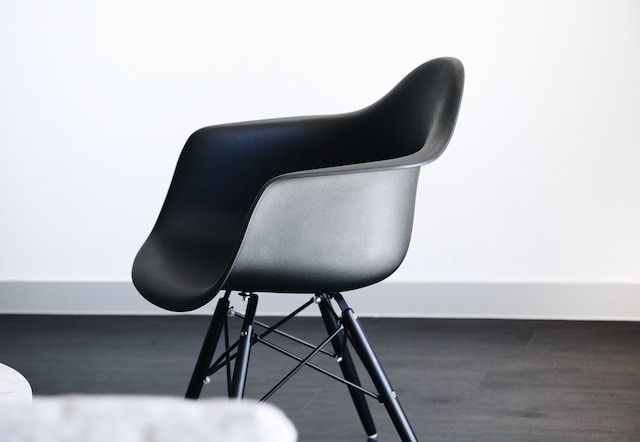
Selecting the right combination of materials and finishes is essential for producing furniture products that are not only functional and durable but also aesthetically pleasing.
Furthermore, careful consideration must be given to the properties and limitations of each material and finish, as well as the desired outcome and overall design vision for the furniture product.
Different Types of Materials and Finishes Used in Furniture Manufacturing
Following, we’ve discussed some of the most common types of materials and finishes used in furniture manufacturing:
Materials:
Wood: Wood is a popular choice for furniture manufacturing because it is durable, versatile, and can be easily shaped and finished. Different types of wood, such as oak, maple, and walnut, have their own unique properties and characteristics.
Metal: Metal is a strong and durable material that can be used in a variety of furniture designs. Popular types of metal used in furniture manufacturing include steel, aluminum, and brass.
Plastic: Plastic is a lightweight and cost-effective material that is often used in modern furniture designs. It is available in a wide range of colors and finishes, making it a versatile option for furniture manufacturing.
Fabric: Fabrics, such as cotton, linen, and leather, are commonly used in furniture manufacturing to create comfortable and stylish seating options. The choice of fabric can depend on factors such as durability, texture, and color.
Paint: Painting is a popular finishing technique used to add color and protect the surface of furniture. Different types of paint, such as latex and oil-based, can be used depending on the desired look and durability.
Stain: Staining is a finishing technique used to enhance the natural beauty of wood by adding color and highlighting the grain. Different types of stain, such as oil-based and water-based, can be used depending on the type of wood and desired outcome.
Varnish: Varnish is a clear protective coating applied to the surface of furniture to protect it from wear and tear. Different types of varnish, such as polyurethane and shellac, can be used depending on the type of material and desired level of protection.
Lacquer: Lacquer is a finishing technique used to create a smooth and glossy surface on furniture. It is often used on metal and wood furniture to create a durable and visually appealing finish.
Ultimately, the choice of materials and finishes used in furniture manufacturing can have a significant impact on the final product. By carefully considering the properties and limitations of each material and finish, manufacturers can produce furniture products that are not only functional and durable but also aesthetically pleasing.
How Material and Finish Choices Can Affect the Manufacturing Process and Product Quality?
The selection of materials and finishes can have a significant impact on the manufacturing process and product quality in furniture manufacturing. Here are some ways that material and finish choices can affect the process and outcome:
Production efficiency: Different materials and finishes require different manufacturing processes and techniques, which can affect production efficiency. For example, working with certain types of wood may require different tools and equipment than working with metal or plastic, which can increase the time and cost of production.
Product durability: The choice of materials and finishes can affect the durability and longevity of the furniture product. For instance, certain finishes may provide better protection against wear and tear or environmental factors than others, which can affect the overall lifespan of the product.
Aesthetic appeal: The materials and finishes used can also impact the visual appeal of the furniture product. For example, using high-quality materials and finishes can enhance the overall look and feel of the product, while choosing materials and finishes that are not well-suited to the design or function of the furniture can detract from its visual appeal.
Cost: The choice of materials and finishes can also affect the cost of production and ultimately the price of the furniture product. Some materials and finishes may be more expensive than others, which can affect the overall profitability of the manufacturing process.
Overall, it is important for furniture manufacturers to carefully consider the properties and limitations of different materials and finishes and their potential impact on the manufacturing process and product quality.
By selecting materials and finishes that are well-suited to the design, function, and intended use of the furniture product, manufacturers can produce high-quality, durable, and aesthetically pleasing products that meet the needs and expectations of their customers.
Tips for Selecting Appropriate Materials and Finishes for Different Types of Furniture
Following, we’ve discussed some tips for selecting appropriate materials and finishes for different types of furniture:
Seating: When selecting materials for seating, it is important to consider factors such as comfort, durability, and ease of maintenance. Leather and other fabrics can be good choices for upholstered seating, while wood and metal can be used for frame construction. For finishes, stain or paint can be used to add color, while varnish or lacquer can be used to protect the surface from wear and tear.
Tables: Tables come in a wide range of styles and designs, so it is important to select materials and finishes that match the intended use and aesthetic. Wood is a popular choice for table construction due to its durability and versatility, while glass and metal can be used to create a modern and sleek look. Finishes such as stain, paint, and varnish can be used to enhance the natural beauty of the wood or add a splash of color.
Cabinets and storage: Cabinets and storage units can be constructed from a variety of materials, including wood, metal, and plastic. The choice of material may depend on the intended use, weight-bearing capacity, and durability requirements. Finishes such as paint, varnish, or lacquer can be used to enhance the appearance of the cabinet and protect it from wear and tear.
Outdoor furniture: Outdoor furniture needs to be able to withstand exposure to the elements, so it is important to select materials and finishes that are weather-resistant and durable.
Furthermore, materials such as teak, cedar, and wrought iron are popular choices for outdoor furniture due to their resistance to moisture and decay. Finishes such as varnish, lacquer, or paint can be used to protect the surface from fading or rusting.
Overall, selecting appropriate materials and finishes for different types of furniture requires careful consideration of factors such as function, aesthetics, durability, and maintenance requirements. By selecting the right materials and finishes, furniture manufacturers can produce products that meet the needs and expectations of their customers and stand the test of time.
Prototyping and Testing
Prototyping and testing are crucial steps in the furniture manufacturing process that ensure the final product meets the required standards of quality and functionality.
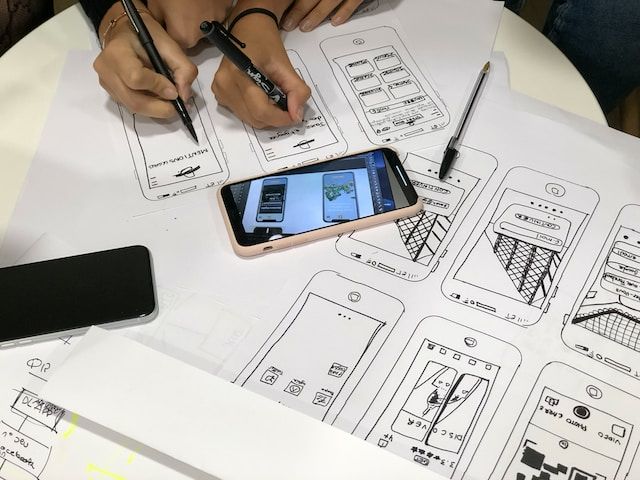
Prototyping involves creating a sample or model of the furniture design, while testing involves evaluating the prototype to identify any design flaws or manufacturing issues that need to be addressed.
By using prototyping and testing, furniture manufacturers can refine their designs and improve the manufacturing process, resulting in a high-quality finished product that meets the needs and expectations of their customers.
Importance of prototyping and testing in furniture manufacturing
Prototyping and testing are essential steps in furniture manufacturing because they help to ensure that the final product meets the required standards of quality and functionality. Here are some of the key reasons why prototyping and testing are important:
Identifying design flaws: Prototyping allows furniture manufacturers to identify any design flaws or issues before mass production begins. By creating a prototype, designers can evaluate the design and make any necessary changes to improve its functionality, aesthetics, or ergonomics.
Evaluating functionality: Testing allows manufacturers to evaluate the functionality of the prototype and ensure that it meets the intended purpose. This can involve testing the durability, weight capacity, stability, and other functional aspects of the furniture.
Refining the manufacturing process: Prototyping and testing can help manufacturers refine their manufacturing process and identify any potential production issues that may arise. This can lead to improved efficiency, reduced waste, and lower production costs.
Meeting customer expectations: Prototyping and testing allow manufacturers to ensure that the final product meets the expectations of their customers. By evaluating the prototype, manufacturers can identify any issues that may affect customer satisfaction, such as comfort, style, or ease of use.
In summary, prototyping and testing are critical steps in furniture manufacturing that ensure the final product is of high quality, meets customer expectations, and is produced efficiently and cost-effectively. By investing in prototyping and testing, manufacturers can improve their designs, manufacturing processes, and overall business success.
Different Types of Prototypes and Tests that Can be Used
There are various types of prototypes and tests that can be used in furniture manufacturing. Here are some of the most common ones:
3D printing: 3D printing is a technology that allows designers to create a physical prototype of their design quickly and easily. This can be useful for evaluating the form and fit of a design and making any necessary modifications.
Stress testing: Stress testing involves subjecting a prototype to various levels of stress and evaluating its performance. This can include testing the weight capacity, durability, and stability of the furniture.
Material testing: Material testing involves evaluating the strength, durability, and other properties of the materials used in the furniture. This can include testing the resistance to wear and tear, moisture, and temperature changes.
Comfort testing: Comfort testing involves evaluating the ergonomic aspects of the furniture design, such as the comfort and support provided to the user. This can include evaluating the seating posture, armrest height, and backrest angle.
Aesthetic testing: Aesthetic testing involves evaluating the overall appearance of the furniture and assessing its visual appeal. This can include evaluating the color, texture, and finish of the furniture.
User testing: User testing involves evaluating the furniture design by having users interact with it and providing feedback. This can include evaluating the ease of use, accessibility, and overall satisfaction of the users.
In summary, the different types of prototypes and tests used in furniture manufacturing serve different purposes and can be used at different stages of the design and manufacturing process. By using a combination of these methods, designers and manufacturers can evaluate the functionality, durability, aesthetics, and overall quality of the furniture design to ensure it meets the required standards.
Tips for Effective Prototyping and Testing
Effective prototyping and testing are crucial for ensuring that furniture designs meet the required standards of quality and functionality. Here are some tips for effective prototyping and testing:
Start early: It's important to start the prototyping and testing process early in the design process to allow sufficient time for modifications and improvements.
Set clear goals and objectives: Before starting the prototyping and testing process, it's essential to set clear goals and objectives to guide the process and ensure that the testing is focused and relevant.
Test in real-world conditions: It's important to test furniture designs in real-world conditions to ensure that they can withstand everyday use and meet the requirements of their intended use.
Involve users: Involving users in the testing process can provide valuable feedback on the design and help identify any usability or comfort issues.
Use multiple testing methods: Using a variety of testing methods, such as stress testing, material testing, and user testing, can provide a more comprehensive evaluation of the design and identify any potential issues.
Iterate and refine: It's important to iterate and refine the design based on the feedback and results of the testing to ensure that the final product meets the required standards of quality and functionality.
Document and analyze: It's important to document and analyze the results of the testing to inform future design and manufacturing decisions and improve the overall process.
In summary, effective prototyping and testing are essential for ensuring that furniture designs meet the required standards of quality and functionality. By following these tips, designers and manufacturers can ensure that their furniture designs are well-tested and refined to provide a high-quality and functional final product.
Sustainability and Ethical Considerations
Sustainability and ethical considerations are becoming increasingly important in the furniture manufacturing industry.
With concerns about the environmental impact of manufacturing processes and the ethical implications of labor practices, designers and manufacturers are taking steps to improve sustainability and ethical practices in furniture manufacturing.
This includes using eco-friendly materials, reducing waste, ensuring fair labor practices, and promoting social responsibility. In this section, we will explore some of the key sustainability and ethical considerations in furniture manufacturing and how they are being addressed.
Environmental and Social Impacts of Furniture Manufacturing
Furniture manufacturing can have significant environmental and social impacts, including:
Environmental impacts: The production of furniture often requires the use of natural resources, including wood, metals, and plastics. The extraction of these materials can have a significant impact on the environment, including deforestation, habitat destruction, air and water pollution, and greenhouse gas emissions. In addition, the manufacturing process itself can contribute to pollution and waste.
Social impacts: Furniture manufacturing can also have social impacts, including exploitation of workers, poor working conditions, and human rights violations. Many furniture manufacturers operate in countries with lax labor laws and regulations, which can lead to worker exploitation and abuse.
These impacts can have significant consequences for both the environment and society. However, there are steps that can be taken to mitigate these impacts and promote more sustainable and ethical practices in furniture manufacturing.
For example, furniture manufacturers can use eco-friendly materials and production processes, such as recycled materials and sustainable forestry practices. They can also adopt circular economy principles, which prioritize resource efficiency and waste reduction. To address social impacts, manufacturers can ensure fair labor practices, promote worker safety and health, and prohibit the use of child labor and forced labor.
Overall, it is important for furniture manufacturers to consider the environmental and social impacts of their operations and take steps to reduce their negative effects. This can not only help protect the planet and promote social justice, but also improve the reputation and profitability of furniture companies.
Different Approaches to Sustainable and Ethical Furniture Manufacturing
There are various approaches to sustainable and ethical furniture manufacturing, some of which include:
Using sustainable materials: One of the most important steps that furniture manufacturers can take to promote sustainability is to use eco-friendly materials. This may include using recycled materials, sustainable forestry practices, and materials that are renewable and biodegradable.
Reducing waste: Furniture manufacturers can also promote sustainability by reducing waste throughout the manufacturing process. This may include using production methods that minimize scrap and waste, as well as finding ways to reuse or recycle materials that would otherwise be discarded.
Adopting circular economy principles: The circular economy is an economic model that prioritizes resource efficiency and waste reduction. In furniture manufacturing, this may involve finding ways to reuse or recycle materials, designing products that can be easily disassembled and repurposed, and finding ways to extend the life of products.
Promoting fair labor practices: To address social impacts, furniture manufacturers can ensure that their workers are treated fairly and paid a living wage. This may involve adhering to international labor standards, such as those set by the International Labour Organization (ILO), and providing safe and healthy working conditions.
Engaging in social responsibility: Furniture manufacturers can also engage in social responsibility by supporting local communities, promoting diversity and inclusion, and advocating for social and environmental issues.
These approaches are not mutually exclusive, and many furniture manufacturers may adopt multiple strategies to promote sustainability and ethical practices. Ultimately, the goal is to create a more sustainable and socially responsible furniture industry that benefits both the environment and society.
Examples of Companies that Prioritize Sustainability and Ethics in their Furniture Manufacturing Processes
There are many furniture companies that prioritize sustainability and ethics in their manufacturing processes. Here are a few examples:
IKEA: IKEA is one of the largest furniture retailers in the world and has a strong commitment to sustainability. The company uses sustainable materials such as FSC-certified wood and has implemented a circular economy strategy that includes recycling and repurposing products.

Herman Miller: Herman Miller is a furniture manufacturer that is known for its innovative designs and commitment to sustainability. The company has implemented a number of sustainable practices, including using recycled materials and reducing waste in its manufacturing process.
Knoll: Knoll is a furniture manufacturer that has been committed to sustainability for over 40 years. The company uses environmentally friendly materials and has implemented a number of sustainable practices, including reducing waste and using renewable energy sources.
Steelcase: Steelcase is a furniture manufacturer that has a strong commitment to sustainability and social responsibility. The company has implemented a number of sustainable practices, including using recycled materials and reducing waste in its manufacturing process. Steelcase also supports local communities and promotes diversity and inclusion.
Patagonia: While not primarily a furniture manufacturer, Patagonia is a well-known outdoor clothing and gear company that is committed to sustainability and ethics. The company uses eco-friendly materials and has implemented a number of sustainable practices, including reducing waste and promoting fair labor practices throughout its supply chain.
These companies serve as examples of how furniture manufacturers can prioritize sustainability and ethics in their operations, while still producing high-quality and innovative products.
Wrapping Up
In conclusion, designing for furniture manufacturing involves considering a range of factors, including manufacturing constraints, materials and finishes, prototyping and testing, and sustainability and ethics.
By keeping these factors in mind, furniture designers can create practical, efficient, and high-quality designs that are also socially and environmentally responsible. Adopting key design principles such as simplicity, modularity, scalability, and ergonomics can further enhance the effectiveness of furniture manufacturing processes.
With the right tools, techniques, and mindset, furniture manufacturers can create products that meet the needs of consumers while also promoting a more sustainable and ethical future.
How Deskera Can Assist You?
Deskera's integrated financial planning tools allow investors to better plan their investments and track their progress. It can help investors make decisions faster and more accurately.
Deskera Books enables you to manage your accounts and finances more effectively. Maintain sound accounting practices by automating accounting operations such as billing, invoicing, and payment processing.

Deskera CRM is a strong solution that manages your sales and assists you in closing agreements quickly. It not only allows you to do critical duties such as lead generation via email, but it also provides you with a comprehensive view of your sales funnel.
Deskera People is a simple tool for taking control of your human resource management functions. The technology not only speeds up payroll processing but also allows you to manage all other activities such as overtime, benefits, bonuses, training programs, and much more. This is your chance to grow your business, increase earnings, and improve the efficiency of the entire production process.
Final Takeaways
We've arrived at the last section of this guide. Let's have a look at some of the most important points to remember:
- Designing for furniture manufacturing involves balancing design creativity with practicality and manufacturing efficiency. This approach ensures that the end product meets both design and manufacturing requirements, resulting in a high-quality product that can be produced efficiently and cost-effectively.
- Designs that are optimized for the manufacturing process can result in higher-quality products. When designs are created with the manufacturing process in mind, manufacturers can ensure that the furniture is structurally sound, durable, and meets industry standards.
- Semi-custom production is a hybrid between mass production and custom production. This process involves producing furniture pieces with some customizable features, such as color or upholstery options.
- The designer needs to choose production techniques that are appropriate for the selected materials and the desired outcome. For example, some materials may require specific cutting or joining techniques to achieve the desired shape or function.
- Furniture designs should be scalable, meaning they can be produced in large quantities without compromising quality or cost. Designers should consider how the furniture product can be manufactured at scale and how it can be assembled in an efficient and cost-effective manner.
- Finishing techniques can include painting, staining, and coating with various types of sealants or varnishes. The choice of finish can depend on factors such as the material used, the desired look and feel of the product, and the intended use and location of the furniture.
- Different materials and finishes require different manufacturing processes and techniques, which can affect production efficiency. For example, working with certain types of wood may require different tools and equipment than working with metal or plastic, which can increase the time and cost of production.
Related Articles

